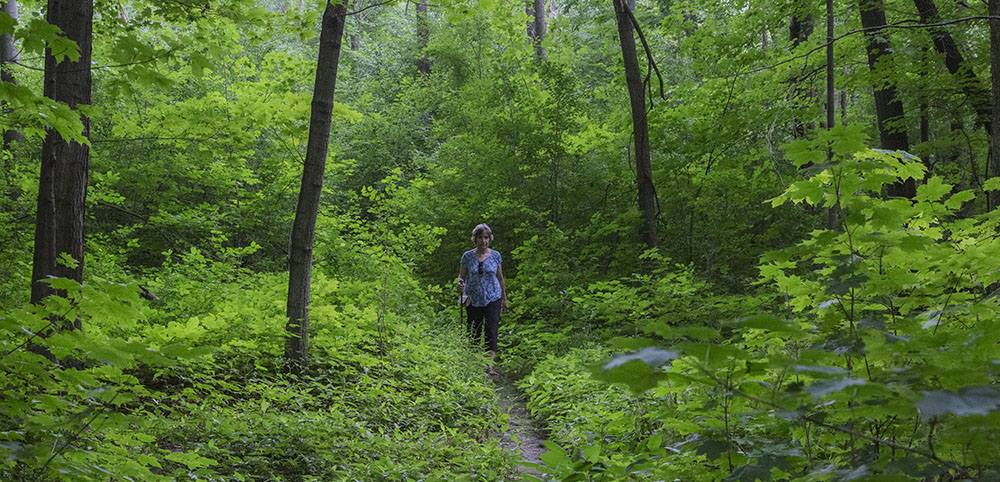
The Abstract Wild: Stigler Nature Preserve in New Berlin
September 16, 2021 | Topics: Places
By Eddee Daniel
It was a revelation! I was totally unprepared for my first visit to Stigler Nature Preserve. In order to get there, I drove through what seemed like miles of low-rise commercial establishments surrounded by acres of asphalt typical of suburban business and industrial parks, which are chronically devoid of both nature and pleasant places to walk. Heat rose off the pavement in shimmering waves. Trucks throttling down rumbled, reeking of diesel fumes. This, I thought, is a most unlikely place to find a nature preserve. But I’d learned of Stigler from my fellow nature-lover Kimberly, who blogs at The Park Next Door and who is adept at finding hidden or out-of-the-way parks and preserves. I was determined to see it for myself.
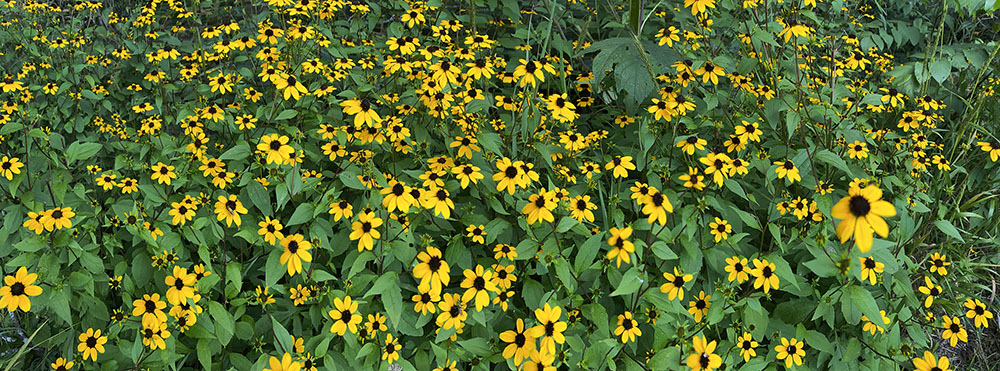
The small parking lot was squeezed between a self-storage complex and the Brittany Parkside Apartments, presumably a nod to the preserve and either a good omen, I thought, or yet another example of naming that which is destroyed by development. At the entrance, a broad trail led me into the shade of the overarching canopy. A delightful coolness enveloped me, along with a pungent woodland perfume. Before long I came to a fork. On the right an arrow-straight path receded tunnel-like to a vanishing point in the distance. I went left, where the still-wide, thickly mulched trail curved into a stand of very tall trees.

Suddenly it felt very secluded and enchanting, a perfect antidote for its industrial surroundings. I discovered a stick fort next to the trail, a somnolent creek spanned twice by footbridges, a meadow adorned with summer wildflowers. And, on this occasion, I also discovered that I had the place all to myself. Like a secret no one else shared. Although on subsequent visits I have encountered other people, they have tended to be few and far between, usually a dog walker or two.

The sole exception has been during the COVID-19 shutdown last year. Then the trail was bustling with stir-crazy families, in all probability seeking adventure, escape and solace in nature. To the solitary adult dog-walker was added a plethora of kids: walking on logs, climbing trees, throwing stones in the creek, and adding sticks to the stick forts—which have grown into an entire village within the past year. I can think of no better argument for saving what little there is left of the natural world, even in places like this…. No—especially in places like this!
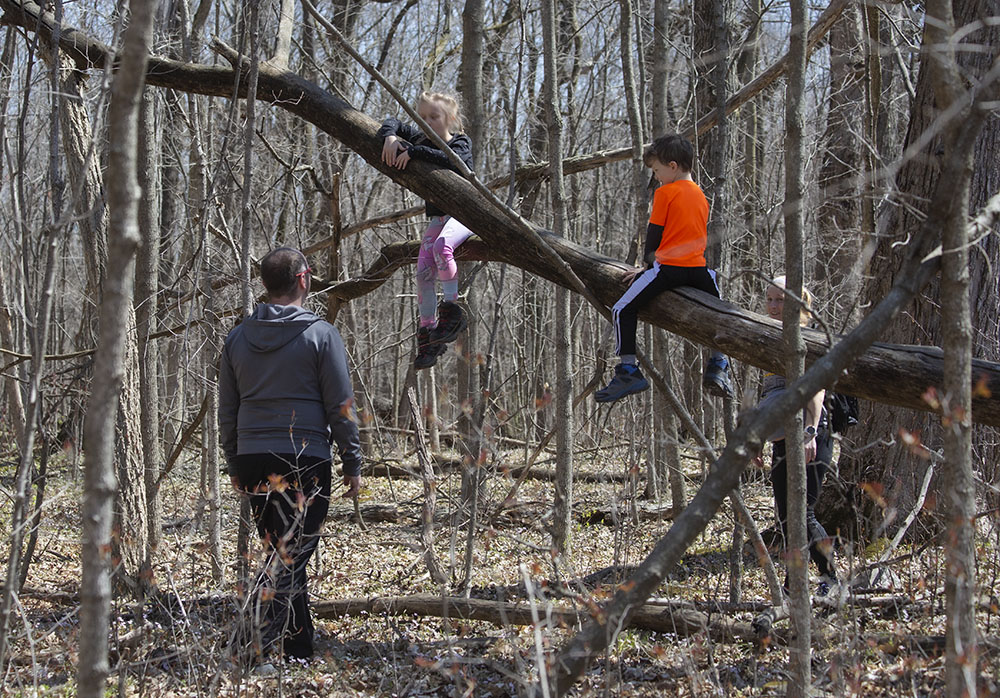
Most of us, if we think about it at all, imagine that protecting patches of woodland or wetland here and there is for the good of the plants and wild animals that live in them—and so it should be to any extent possible. But these special places are no less for the benefit of us humans who have built up all of the industries, apartment complexes, suburbs, and cities that have obliterated so much of what we value so highly when its gone. In fact, our need is arguably greater. In his book, “The Abstract Wild,” Jack Turner writes, “We live with loss and rage, we write elegies and polemics, we remember a wilder nature—and that memory reigns over the present as an unrelenting and often indulgent nostalgia.” When pressed, as the entire globe has been during the COVID-19 pandemic, we instinctively turn—or return—to nature if we can.
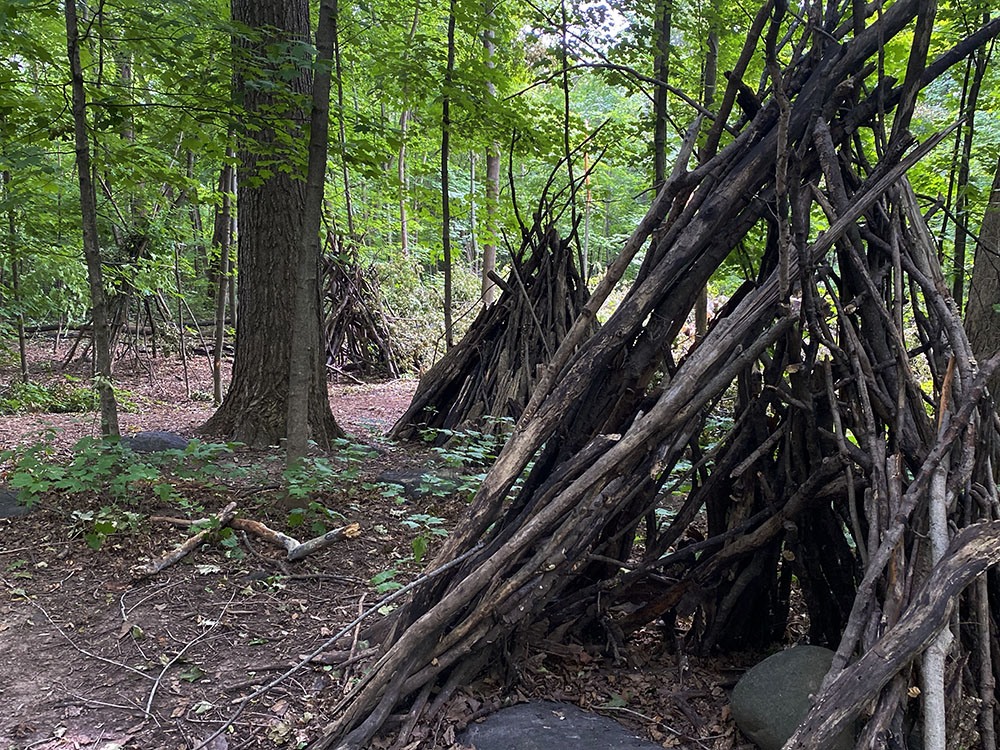
Unfortunately, the 41 acres of Stigler Nature Preserve are not enough to sustain a natural wilderness or support a significant population of wild creatures. There is just enough wildness here to heal our own broken spirits when the time comes and we are in need. The diminutive wildflowers as well as the enormous trees are sacred, if we choose to see them that way. But there is no chance of seeing them that way if there are no opportunities to see them at all. Turner says, “We treat the natural world according to our experience of it. Without aura, wildness, magic, spirit, holiness, the sacred, and soul, we treat flora, fauna, art, and landscape as resources and amusement.”
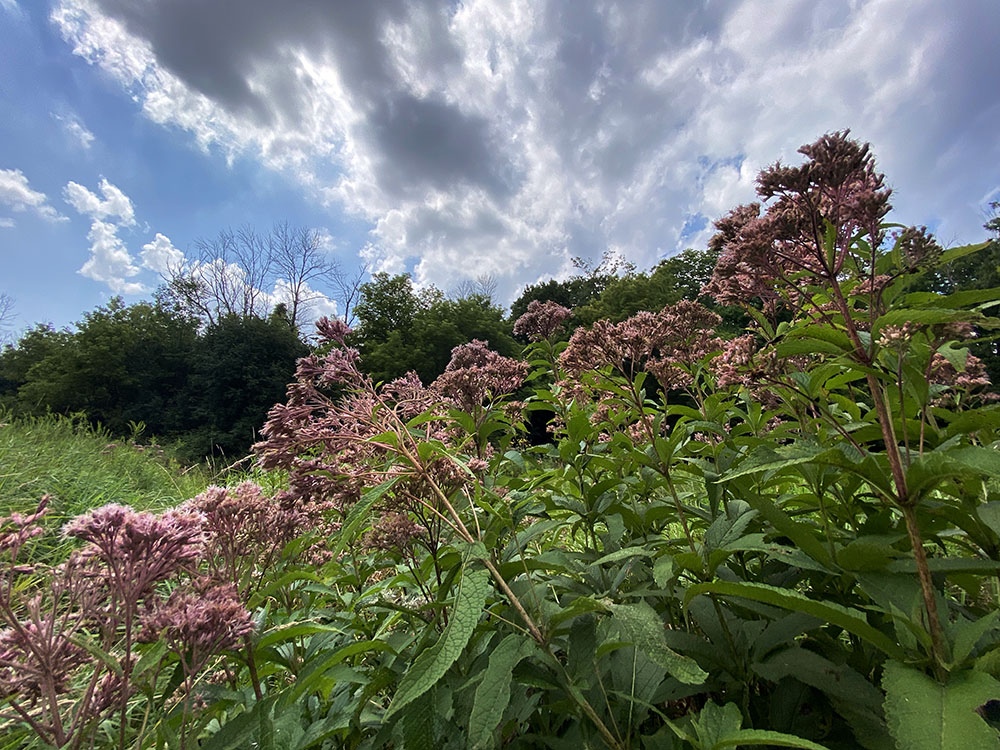
Without personal experience, the wild becomes an abstraction and semi-wild places like Stigler not “blank spots on the map” (to quote Aldo Leopold) but small green rectangles on the map, embedded within the gridded geopolitical boundaries of our increasingly urban landscapes. But you can enjoy, as I have, the hushed recesses of a forest, the trill of a songbird, the growth of curiously shaped fungi, the stippled splash of sunlight through foliage, and the scent of pure damp earth if you live near a place like Stigler (and awealthofnature.org is predicated on the notion that most of us who live in Southeastern Wisconsin do live near a park or preserve, even if you have to pass through an “industrial park” to get there). And perhaps that taste of the wild will lead you to want more….
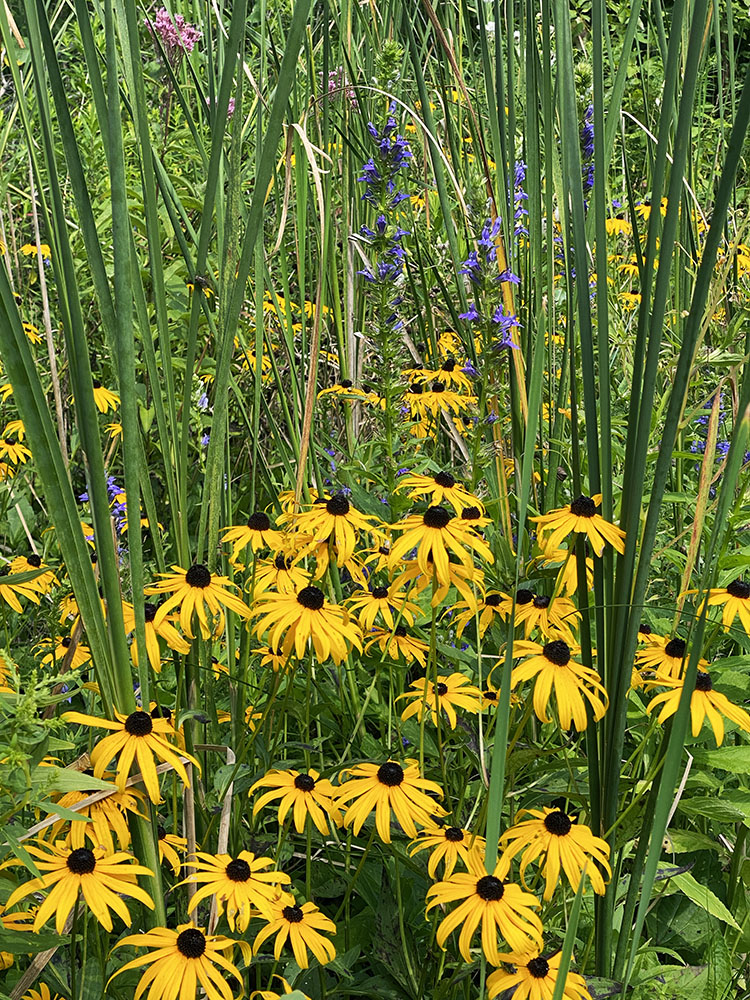
Stigler Nature Preserve is no substitute for vast Rocky Mountain wildernesses or the Chequamegon–Nicolet National Forest of northern Wisconsin but those places are mere abstractions for anyone unlikely or unable to make the journey to reach them. Distant wildernesses, national parks, and wildlife refuges, as important as they are, cannot substitute for the regular opportunities to experience nature that are available at nearby parks and preserves like Stigler—or any of the other city, county, state, and private parks in the Milwaukee metropolitan area.

I pause at an oxbow in the creek. The water seems to disappear, mirroring the canopy overhead, sunlight streaming through the leaves. A strong scent of cedar wafts in the gentle breeze. Birdsong volleys back and forth from unseen perches in the forest. There is no sense, standing here, that I am still in the midst of an intensively developed suburban landscape. Magical. But no magician’s trick. A real experience—and I silently thank the City of New Berlin for preserving this place.

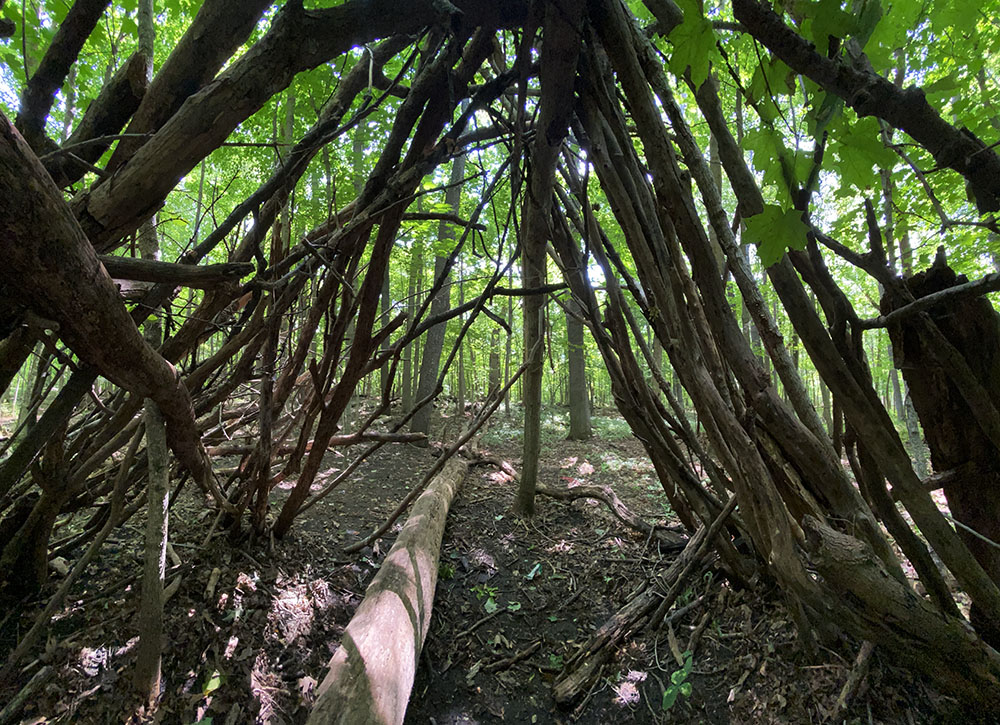
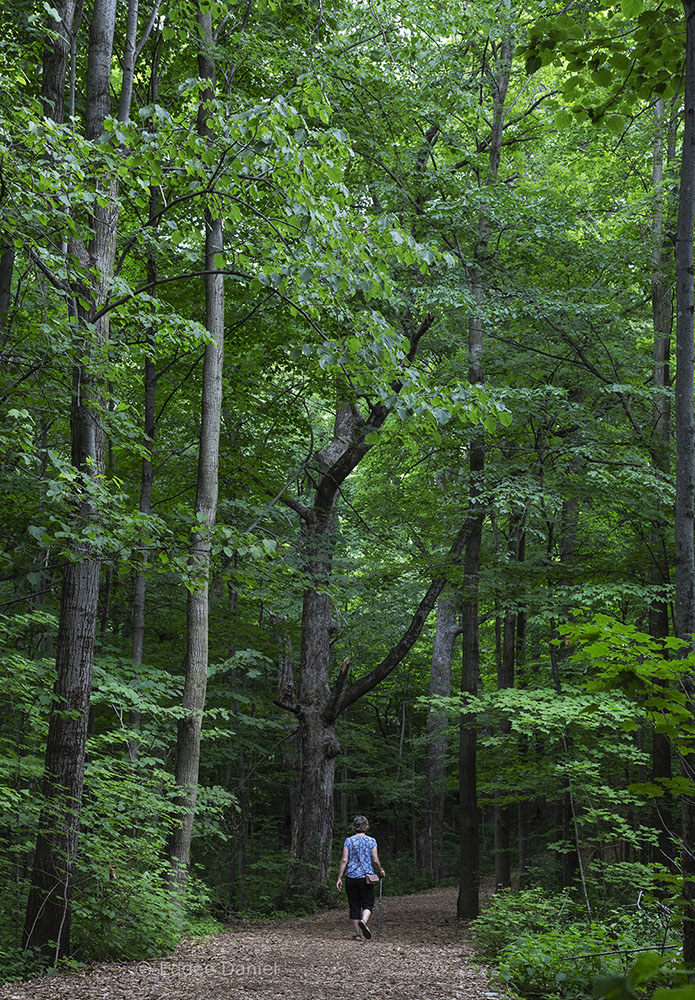
For more information about Stigler Nature Preserve and to find it on our map, click here.
Eddee Daniel is a board member of Preserve Our Parks and Project Director of A Wealth of Nature.

